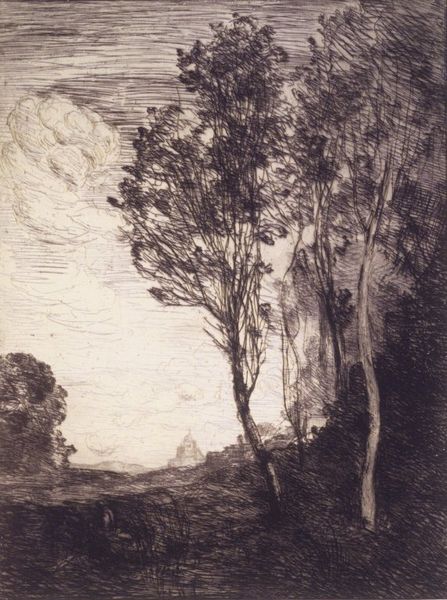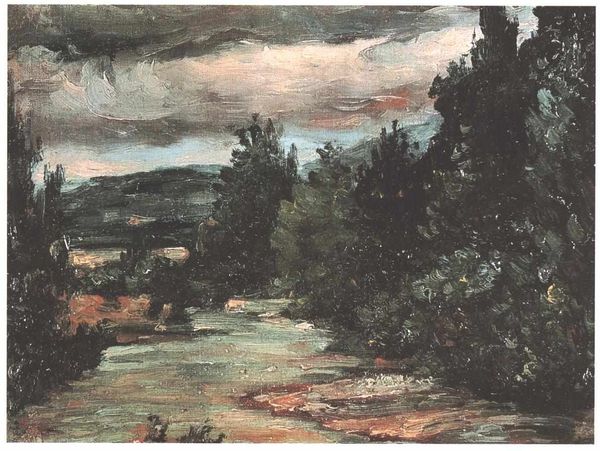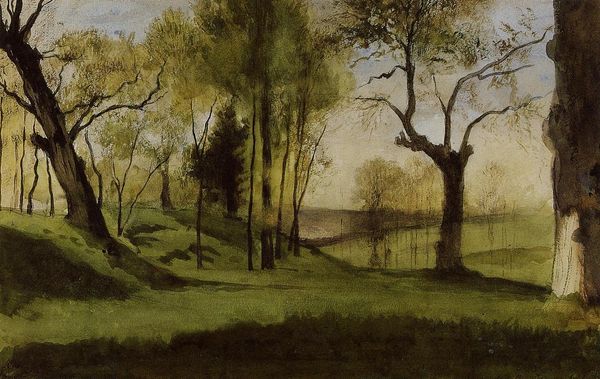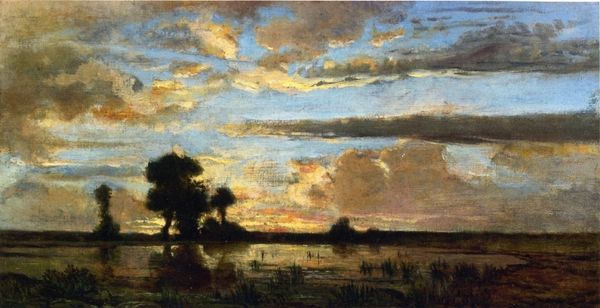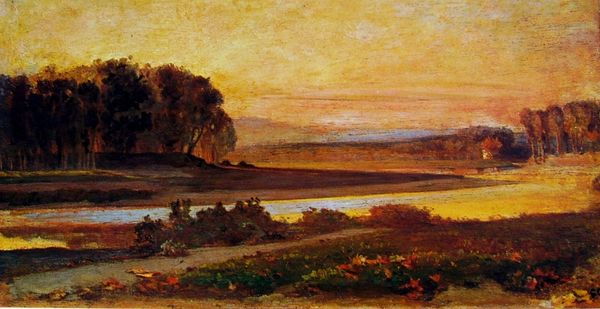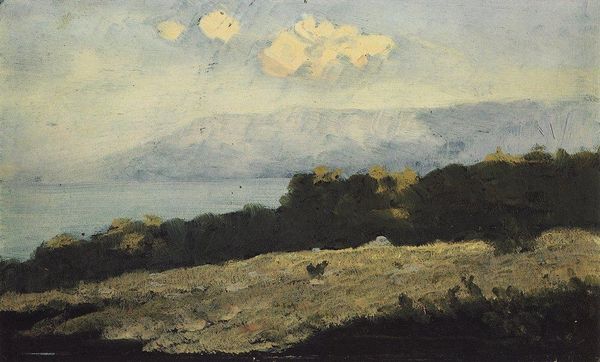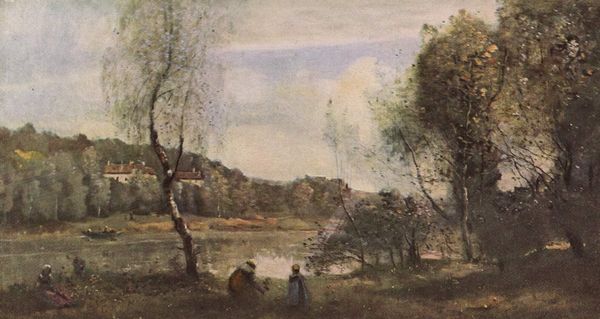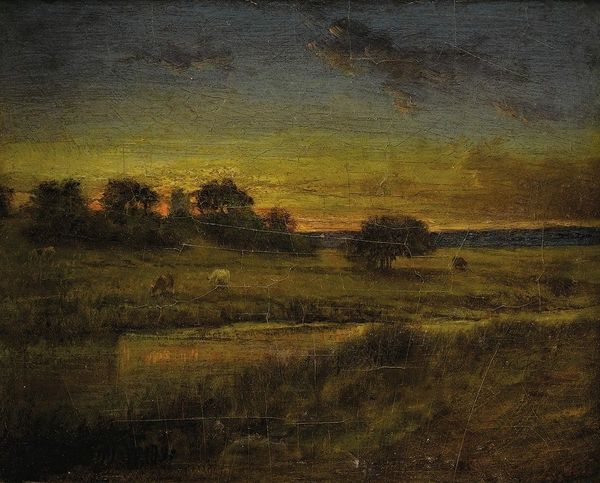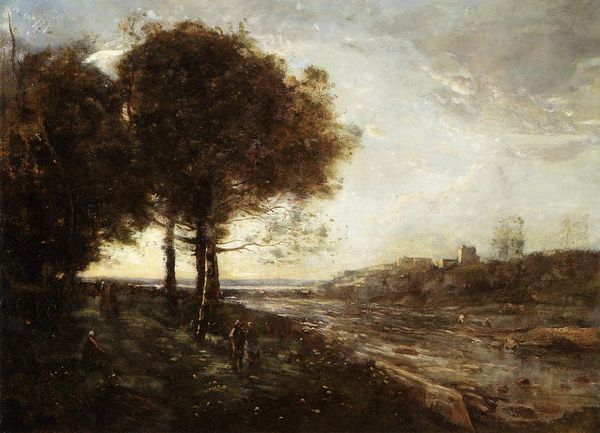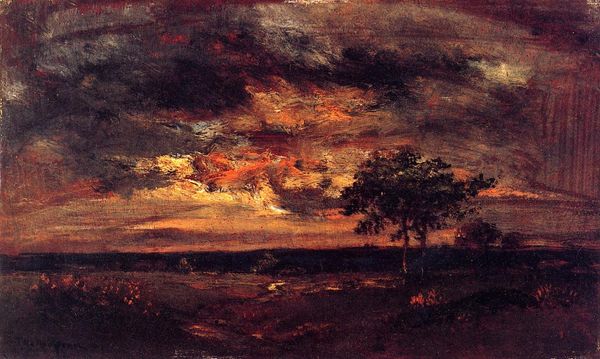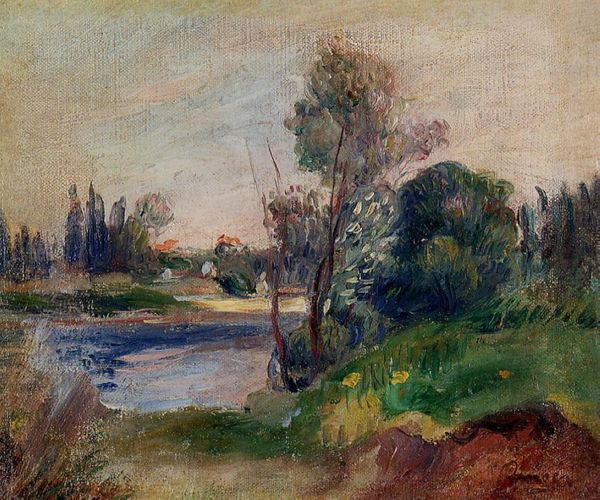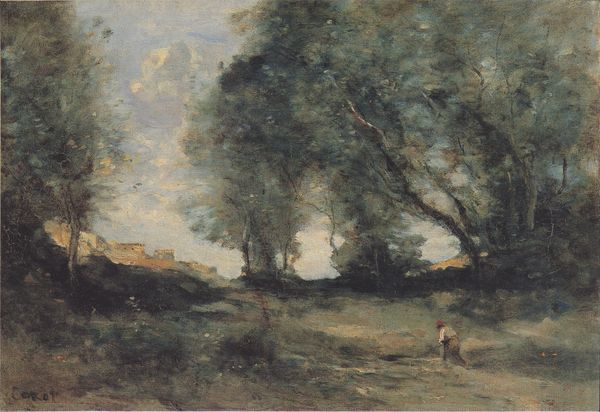
Copyright: Public domain
Curator: This is Van Gogh's "The Landscape in Drenthe," an oil painting created in 1883. It's a somewhat atypical work, particularly when considering his later, more vibrant palette. Editor: Yes, and initially, I find the painting remarkably somber, even melancholic. The limited color range contributes heavily to this feeling. There is a real weight to the application of the pigment as well, lending the painting a palpable texture. Curator: The heavy impasto is characteristic, even at this relatively early stage in his career. Consider how the thickly applied paint defines the forms of the trees and landscape; there's a real emphasis on materiality. His brushstrokes contribute a distinctive emotional effect. Editor: Exactly, I'm compelled to think about his state of mind while viewing this piece. Drenthe, after all, was a very isolated, sparsely populated region of the Netherlands at that time, characterized by peat bogs and heathland. The painting reflects that. The landscape appears almost oppressive, and this relates to a cultural understanding of land use in the Netherlands and also rural living at that time. Curator: We can see that play out compositionally as well. The strong horizontals and verticals, created by the landscape and trees, give a very grounded sense, of tangible reality. Yet the application of the oil-paint with rough strokes in order to show the texture of land is interesting to compare to romanticist traditions. Editor: Absolutely. I would suggest that its realism contrasts sharply with many landscape paintings from that era. One would do well to remember that Drenthe in the 1880's faced great poverty; people depended heavily on peat extraction to subsist. This likely impacted the imagery. Curator: The formal rigor mirrors Van Gogh's meticulous, almost scientific approach to representing nature, even early on. It reflects a determined, if perhaps, bleak aesthetic sensibility in my interpretation. Editor: Well, that bleakness serves as a powerful commentary, I think, on the social and economic conditions of the time. His artistic practice makes one question issues around labor, the relation between social context, imagery, and the creative production, so he acts as more than a landscape artist, if one interprets it with his other artworks from this period in mind. Curator: Perhaps it's too simple to focus on color choices, but its somber quality does provide this picture a certain weight that causes you to consider it on more than one level. Editor: I'll definitely need to consider Van Gogh's period in Drenthe with more depth from now on!
Comments
No comments
Be the first to comment and join the conversation on the ultimate creative platform.
